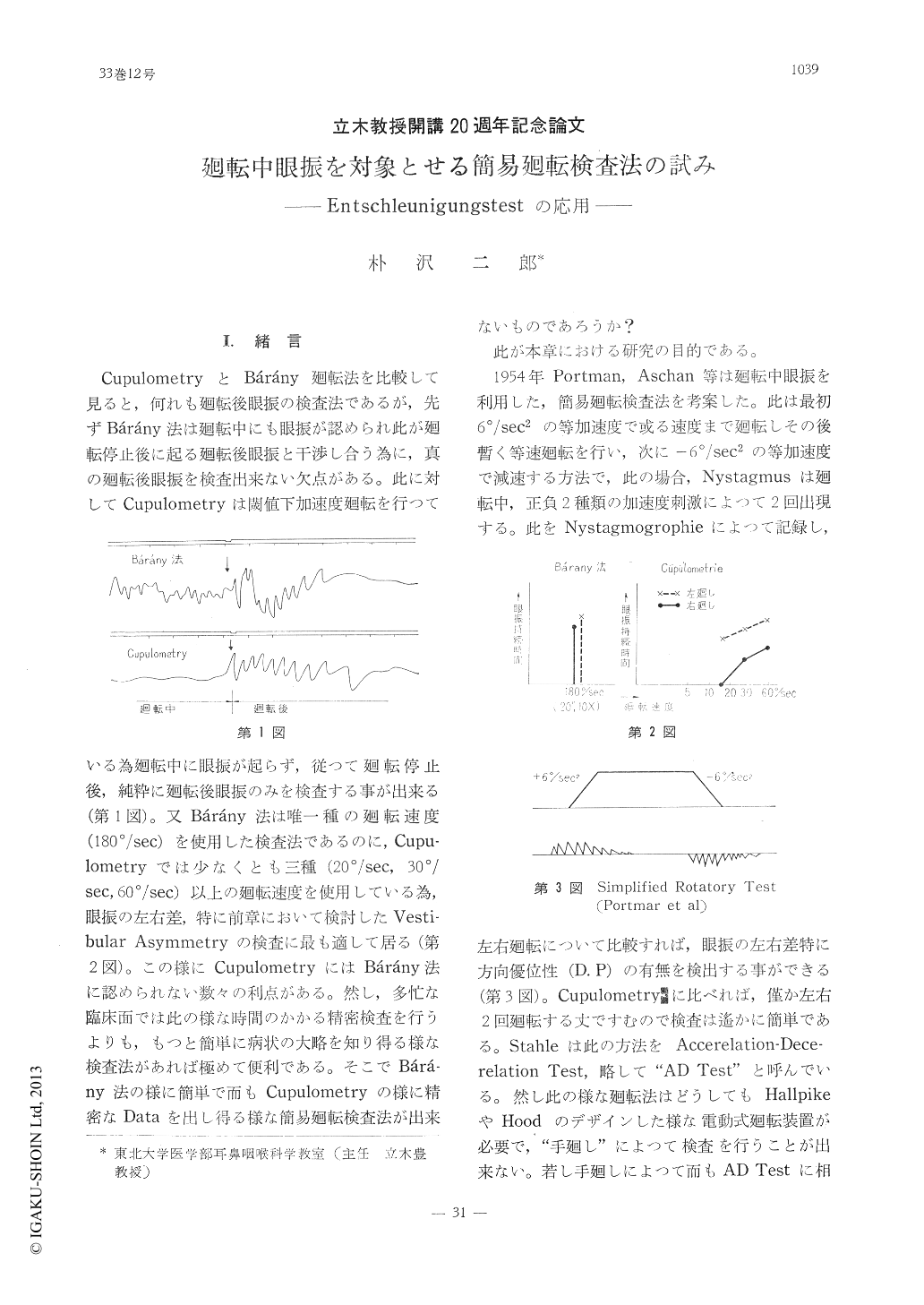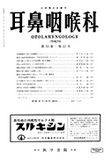- 有料閲覧
- 文献概要
- 1ページ目
I.緒言
CupulometryとBárány廻転法を比較して見ると,何れも廻転後眼振の検査法であるが,先ずBárány法は廻転中にも眼振が認められ此が廻転停止後に起る廻転後眼振と干渉し合う為に,真の廻転後眼振を検査出来ない欠点がある。此に対してCupulometryは閾値下加速度廻転を行つている為廻転中に眼振が起らず,従つて廻転停止後,純粋に廻転後眼振のみを検査する事が出来る(第1図)。又Bárány法は唯一種の廻転速度(180°/sec)を使用した検査法であるのに,Cupu-l0metryでは少なくとも三種(20°/sec,30°/sec,60°/sec)以上の廻転速度を使用している為,眼振の左右差,特に前章において検討したVestibular Asymmetryの検査に最も適して居る(第2図)。この様にCupulometryにはBárány法に認められない数々の利点がある。然し,多忙な臨床面では此の様な時間のかかる精密検査を行うよりも,もつと簡単に病状の大略を知り得る様な検査法があれば極めて便利である。そこでBárány法の様に簡単で而もCupulometryの様に精密なDataを出し得る様な簡易廻転検査法が出来ないものであろうか?
此が本章における研究の目的である。
By application of Kobrak's entschlounigungs-test a hand turning turning test is devised whereby bilateral difference of nystagmus in the either eye may be readily disclosed.
In this test the nystagmus which makes its appearance during the high-speed turning and that appear when either the speed isdiminished or the turning is brought to a stop is recorded by means of E. N. G. It also affords testing for directional preponderance similar to Stahle's accerelation-decelation test which employs electrically powered turning chair.

Copyright © 1961, Igaku-Shoin Ltd. All rights reserved.


